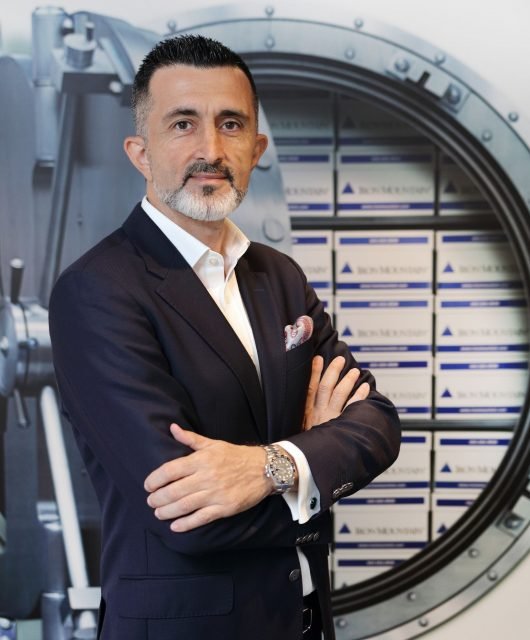What Does Your Brand ‘Look’ Like?
I’m facing a blank Word document. I have in my mind an idea I want to write about. I know there are thousands of different ways to write this article. I could be serious, ‘professional’ (what does that even mean?) or super pedantic about things. But here I am, on the fifth sentence writing to you, reader, directly. Open, conversational – that’s me. I want to show who I am. I’m acting based on who I want to be. I look at things through the lens of my ethos and ACT upon it. Like a commitment to myself to be real and honest and authentic. A life in action.
Exactly the same should happen with brands – but it doesn’t.
Let’s think about this. How do brands become who they want to be?
We have been bombarded with articles and newsletters and courses and LinkedIn posts and etcetera talking all about brand purpose and how it should represent that core belief and ambition that a brand has at its centre for it to mean something stronger in society.
Google Trends shows a 25% increase for ‘brand purpose’ searches since 2016. A quick search on the same platform will show you articles from different marketing websites discussing all about it. And if you want to buy a book about it, Amazon has plenty – from Kotler, through the DO book collection and everyone in between.
And so apparently the world wants to learn about purpose and give brands an essence to grow from. Marketers are working towards building that construct, investing constantly in coms. Experts are talking about it, exploring what works and doesn’t work. Research is being developed around customers’ reaction upon it…
But, are we thinking of purpose in the right way? Are we involving the right people to make it happen? Are we operationalising it? Or are we just depending on our marketing, brand and comms teams to do it? Because if that’s the case, I’m sorry to tell you but your brand will still mean nothing much than before. Using Seth Godin’s metaphor, it will be a meatball sundae. And who likes that?
Marketing teams have actually little to do with purpose – it’s all about actions every day
Think about marketing outputs. A line. A set of imagery. A manual for activation. Key messages. All of them great work, but how would any person believe that those are the only elements that you need to make a brand purpose actually happen?
Brands are not only logos. They are an active flux of visuals, experiences, sounds, feelings, concepts. You can’t just expect your brand to exist with images, so you can’t expect your purpose to exist just because you say you have a purpose.
Purpose comes through actions. Purpose comes through doing. Purpose is proving your point – And while a lot of the things the world see are effectively part of the visual stimuli developed by marketing, what actually makes purpose happen is the people in your business – and you need to get them to live the purpose so that a brand can actually mean something.
Some companies understand it well – they essentially are a living brand idea
I was lucky enough to be part of Johnson & Johnson some years ago and every time I now think about it I can honestly say it was one of the best years of my career. I could talk about the growth opportunities, the amazing talent, the great brand knowledge in the company – but what struck me the most was how they believed and acted every single time on their almost 75 years-old ‘brand purpose’, their Credo.
If you don’t know about J&J’s Credo, you need to read it now. It’s a four-paragraph text that expresses the commitments of the company and that is not only carved in marble in the HQ but lives in every single office around the world almost everywhere. This is not your sexy marketing line at all. It’s lengthy. It makes copywriters grimace. But, let me tell you something: it works. And that’s because J&J learnt the trick.
Bringing your brand to life is about embedding its meaning through the people. Period.
J&J’s Credo is not only a text. It’s a fundamental part of how the company operates. On day one of your induction you get told about the Credo. When you have an important company meeting, you start with the Credo. When you have to hire someone, you think it through the Credo. And when you have to make a tricky marketing decisions on what’s the right content or promotion or commercial strategy, guess what? You think of the Credo.
A brand purpose and philosophy needs to be more than a fancy presentation or a poster on the wall – it needs to live in every single employee. This doesn’t mean just training and performance evaluation, but it’s about embedding what a brand believes in through what we expect our employees to do every day.
Author Denise Lee Yohn has a great metaphor for it: she calls it “fusion”. In her latest book, she describes how brand and culture need to be fused together, as an indivisible element in the company, so that businesses can get a truly distinctive competitive edge. It’s about the rituals, it’s about the employee experience, it’s about internal communications. It’s about everything.
But, essentially, it’s also about helping people get a new lens
What I learnt about my time at J&J was not that there was a set of norms that I had to follow not to be fired. I learnt to think every single day through the lens of the brand.
We need to be a bit more honest with ourselves and admit that nothing that a brand does would be possible if it wasn’t for the people behind the scenes that work for it to be real.
There’s no advertising campaign, no efficient production chain, no sales process if there’s not a human behind who’s deciding what to do or not to do. Even with digital platforms and AI, there are still people that design, decide and deploy the technologies that will serve customers. It’s them who do it – it’s not only defining a purpose and doing a pompous announcement about it.
Think of a brand as the result of a thought process made by all its employees. If we don’t help them learn to think with the lens of that brand, with the lens of that purpose the brand believes in, then how are we expecting brands come to life?
So, if you want your brand to really mean something, why don’t you start by asking these questions in your company?
– First, what do we believe in as a brand? What is our set of values, or beliefs or commitments? What are we fighting for? What are we all about?
– Who are we involving to make our brand come to life? Is it only marketing? Is it only the commercial side of the business? Why haven’t we called HR? Why haven’t we involved them in defining our brand?
-Are we making sure all the business is involved in this? Does production and logistics understand it? Are we ensuring the accountants and lawyers see its value? Is the receptionist, the janitor, the IT department, and any other ‘non-visible’ employees (from a customer perspective) also invited to participate?
-Have we defined the actions and behaviours that make sense with our brand? How our we training our people in them? How are our managers reinforcing those behaviours? Are our leaders being the first in acting like the brand would?
-How are we treating brand-lead actions? Are we giving awards to people who do it? Are we organising internal initiatives that invite people to create on-brand? Are we associating commercial success with the fulfilment of our brand idea?
-How are we measuring our success in bringing our brand to life through people? Are we carrying out an engagement study? Are we doing performance reviews based on it? Are we asking our external audiences about us to see if they understand what we are all about?
After answering those questions you will be able to understand how your brand is becoming what you want it to be.
Brands are successful not when they present a cute purpose, but when they act on it every single day. If you want your brand to do so, start with doing, with the people, with the lens through which they are looking at their job day to day.
Because if your brand is not coming to life, maybe you need to get your lenses checked.





